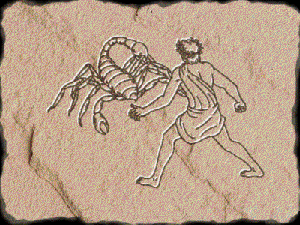Scorpions in Culture and Symbolism: What the Alacrán Has Represented for Centuries
Scorpions, known in Spanish as alacrán, are among the most fascinating creatures in nature. With their armored bodies, menacing pincers, and venomous stingers, they evoke both fear and respect. For thousands of years, humans have tried to understand these animals—not only as predators in deserts and forests but also as symbols of protection, resilience, and transformation.
Across continents and cultures, the scorpion has appeared in mythology, religion, folklore, and even medicine. Today, scientists study scorpions to better understand their biology, while anthropologists trace how these creatures have influenced human imagination. This article explores the multiple meanings of scorpions, combining cultural traditions with modern insights to explain why their presence has always left such a deep mark on human history.

Scorpions in the Natural World
Before exploring symbolism, it is important to understand the biology of scorpions. Belonging to the class Arachnida, they are close relatives of spiders and ticks. More than 2,500 species have been identified worldwide, with habitats ranging from deserts to grasslands and even rainforests.
Despite their intimidating look, most scorpions are not deadly to humans. According to the World Health Organization (WHO), only about 30 species carry venom potent enough to pose serious risks. In many regions, scorpions help balance ecosystems by controlling populations of insects and small animals.
Their unique survival skills—such as glowing under ultraviolet light, enduring harsh climates, and surviving without food for months—have made them symbols of endurance and adaptability.

Ancient Egypt: Scorpions as Guardians
In ancient Egyptian mythology, scorpions were connected to protection. The goddess Serqet was often depicted with a scorpion on her head. She was considered a guardian deity who protected the living from venomous creatures and guided souls safely into the afterlife.
Scorpion amulets have been found in Egyptian tombs, symbolizing protection against harm. Warriors and travelers often carried such charms, believing that the scorpion’s power could shield them from danger.

Scorpions in Greek and Roman Mythology
In Greek mythology, the scorpion is linked to the story of Orion, the giant hunter. According to the legend, Orion boasted he could kill all the animals on Earth. In response, the gods sent a scorpion to stop him. After Orion’s death, both he and the scorpion were placed among the stars—creating the constellations Orion and Scorpius.
This myth gave rise to scorpions as symbols of divine justice, reminding people that pride and arrogance could be punished. In Roman culture, scorpions also appeared in mosaics and artworks as representations of power and protection.

Scorpions in Middle Eastern and Asian Traditions
In Persian folklore, scorpions symbolized danger but also healing. Some traditions used dried scorpion parts in early forms of medicine, though these practices are not scientifically supported today. In certain Middle Eastern cultures, people believed that scorpions could ward off evil spirits, making them paradoxical creatures—feared for their sting yet respected for their spiritual strength.
In parts of India, scorpions appear in religious stories as metaphors for hidden fears or suppressed emotions. Their sting is compared to sudden challenges that test inner resilience.

Indigenous and Latin American Perspectives
In Latin America, the alacrán has long been part of folklore. Among indigenous groups, scorpions often appear in stories about transformation and survival. In Mexico, for example, the scorpion is a regional symbol in the state of Durango, where scorpion imagery is found in local art, sports teams, and traditions.
Some cultures viewed the sudden appearance of a scorpion in the home as a reminder to stay cautious and alert. Rather than superstition, these beliefs often reflected practical knowledge: scorpions were dangerous in rural households, so cultural stories helped teach children and adults to be careful.

The Scorpion in Astrology and Modern Symbolism
One of the most well-known modern associations with scorpions is astrology. The zodiac sign Scorpio is linked to traits such as intensity, resilience, and transformation. While astrology is not scientific, it has kept the scorpion’s symbolic meaning alive in popular culture.
Beyond astrology, scorpions often appear in tattoos, logos, and media as symbols of toughness, danger, or mystery. In martial arts and military insignia, the scorpion is sometimes used to represent strength and readiness to strike when threatened.
Medical and Scientific Interest
Beyond cultural symbolism, modern science has found practical uses for scorpions. Researchers are studying scorpion venom for potential medical applications, including treatments for autoimmune diseases, cancer, and bacterial infections. According to studies published in journals such as Nature and Science Translational Medicine, peptides from scorpion venom show promise in targeting harmful cells while sparing healthy ones.
This scientific interest adds another layer to the symbolism of scorpions: they are not just creatures of fear but also potential sources of healing.

Why Scorpions Continue to Fascinate Us
The enduring symbolism of scorpions lies in their contradictions. They are both feared and respected, dangerous yet protective, destructive yet healing. Their presence in mythology, art, and science reflects humanity’s attempt to understand dualities: life and death, fear and strength, vulnerability and resilience.
When people encounter a scorpion—or even see one represented in stories or art—they are often reminded of these deeper meanings. Rather than viewing them as purely threatening, many cultures interpret scorpions as teachers, encouraging mindfulness, preparation, and inner strength.
Conclusion
From the deserts of Egypt to the temples of India, from Greek myths to Latin American folklore, scorpions have been powerful symbols across human history. Known as alacrán in Spanish, they represent protection, endurance, transformation, and sometimes danger.
Today, science continues to unlock their secrets, exploring how their venom might benefit human health. At the same time, cultural traditions ensure that the scorpion remains more than just an arachnid—it is a timeless symbol of the balance between fear and respect.
For centuries, the scorpion has challenged humanity to look deeper: to recognize threats, to respect resilience, and to embrace transformation. And perhaps that is why the scorpion will always hold a unique place in our collective imagination.
